Highlights
-
This first survey on Canadians with spinal CSF leak demonstrates significant gaps in clinical care, like lack of awareness, difficulties in accessing care, and inconsistent treatments, similar to global observations.
-
Patients’ physical, mental and financial well-being are seriously affected.
-
Increased awareness and improved access to multidisciplinary expert care are paramount.
Introduction
Background
Spinal CSF leak is a debilitating condition where there is loss of CSF volume at the level of the spine, resulting in intracranial hypotension. 1 It is an important cause of secondary headache with an estimated incidence of 3.8–5 per 100,000 persons per year. Reference Schievink, Maya, Moser, Simon and Nuño2,Reference Pradeep, Madhavan, Brinjikji and Cutsforth-Gregory3 However, the true prevalence is still unknown and likely to be higher due to misdiagnosis and lack of recognition. Reference Carroll and Callen4 It is hypothesized that the loss of CSF initiates intracranial hypovolemia with downward displacement of brain structures, resulting in traction of vessels and nerves; yet this causal relationship still remains unclear. Reference Mokri5 The clinical presentation can vary but typically entails moderate-to-severe orthostatic headache that significantly impacts patients’ quality of life (QoL). Other patients however present with constant headache that is unrelated to position. In some cases, headache is even absent. Reference D’Antona, Jaime Merchan and Vassiliou6,Reference Liaw, McCreary and Friedman7 Patients often present with other associated neurological symptoms such as imbalance, change in hearing, tinnitus, nausea and neck stiffness, among others. Reference D’Antona, Jaime Merchan and Vassiliou6 Potential serious complications such as subdural hematomas and even coma or death can occur. Reference Kranz, Gray, Malinzak and Amrhein8
Spinal CSF leak can occur in a spontaneous (spontaneous intracranial hypotension, “SIH”), traumatic (related to trauma), or iatrogenic (post-dural puncture headache [PDPH], or post-surgical) manner. Reference Carroll and Callen4,Reference Kranz, Gray, Malinzak and Amrhein8 In regards to spontaneous spinal CSF leaks, four subtypes of leaks are described: ventral dural tear, proximal nerve root sleeve tear, CSF-venous fistula and distal nerve root sleeve tear. Reference Farb, Nicholson and Peng9 Diagnosis can be complex and challenging. Reference Kranz, Gray and Amrhein10 Finding the exact location of the leak often requires specialized and invasive imaging techniques beyond the traditional MRI. Reference Amoozegar, Guglielmin and Hu11 The treatment of spinal CSF leak usually starts with conservative measures, including bed rest, hydration and caffeine, but the success rate is low. An epidural blood patch (EBP) is usually offered as the initial treatment of spontaneous spinal CSF leaks or PDPH. Other treatment modalities, such as embolization or neurosurgical repair, may be required, especially in complex spontaneous or iatrogenic leaks. Reference Cheema, Anderson and Angus-Leppan12 A possible complication of spinal CSF leak treatment is rebound intracranial hypertension (RIH), estimated to occur in around 30% of cases. Reference Parikh13
Despite recent advancements in the diagnosis and management of spinal CSF leak, there continues to be a lack of awareness and knowledge of this condition, resulting in underdiagnosis, misdiagnosis, lack of access and thus delayed care for many patients with spinal CSF leaks. Reference Kranz, Gray and Amrhein10 Management of these cases is complex and requires multidisciplinary involvement, including neurology, neuroradiology, anesthesiology and neurosurgery. Multidisciplinary centers experienced in this condition are scarce across Canada, further delaying the provision of definitive treatment, even once this condition is recognized.
In a recent study conducted in the United Kingdom (UK) on the QoL of patients suffering from SIH, almost 50% of respondents indicated that SIH had a considerable impact on their mobility and ability to exercise or do self-care and had led to increased anxiety, significant pain and despair. Reference Cheema, Joy, Pople, Snape-Burns, Trevarthen and Matharu14 Furthermore, the study revealed that diagnostic delay and misdiagnosis are common, and there is a lack of consistency in diagnosing and managing SIH in the UK.
Objective
There is anecdotal evidence that Canadian patients suffering from spinal CSF leak share the same difficulties and suffer from suboptimal and delayed care. The primary aim of this study was to identify the barriers and challenges to accessing care and to diagnosis and treatment of spinal CSF leaks in Canada. The secondary objective was to characterize the demographics of the population, wait times for diagnosis and treatment, impact on QoL and financial health and need to seek treatment outside of Canada.
Methods
Study design and survey distribution
We performed a cross-sectional anonymous online survey of Canadian patients with spinal CSF leak. The survey, built in REDCap (Research Electronic Data Capture, Vanderbilt University), was designed in collaboration with Spinal CSF Leak Canada, a Canadian national health charity, and approved by the University Health Network Research Ethics Board (#22-5943.2). The survey was advertised on the Spinal CSF Leak Canada website and via Instagram, Twitter, Facebook and LinkedIn. Furthermore, the survey information was emailed by Spinal CSF Leak Canada to their patients’ subscriber list. The survey was open from May 30, 2023, until September 22, 2023, and accessed through a secure REDCap link/QR code included in the advertisement. Informed consent without identifiers was obtained electronically before participation in the study could occur. At the start of the survey, patients were asked whether they had a physician-confirmed diagnosis of spinal CSF leak. The survey further contained questions on participants’ demographics, orthostatic headache diagnosis, investigations, treatments, complications, wait times, follow-up, impact on QoL, financial consequences and the need to seek care out of country. All information was collected anonymously and securely saved in the REDCap database.
Study population
Participants aged 18 years or older, who were Canadian citizens or permanent residents (PR) living in Canada and suffering from orthostatic headache, were included. Participants who declined to participate, who were aged 17 or under, who were non-Canadian citizens or non-PR or who were Canadian citizens (or PR) but not living in Canada at the time of illness, were excluded.
Statistical analysis
Descriptive statistics were performed using R (R Core Team [2021]). Missing data were not imputed. Data for demographics; type of spinal CSF leak; wait times; type, number and locations of imaging techniques; treatment type; and incidence of complications were summarized and analyzed. Nominal variables were obtained for gender, age, medical costs, improvement of care and names of specialists. Continuous variables were compared using the Student’s t-test and the Mann–Whitney U test depending on the need for parametric and nonparametric methods. Depending on cell sizes, categorical variables were assessed using the chi-square test or Fisher’s exact test. For all statistical calculations, a two-sided p-value of < 0.05 was considered statistically significant.
Sample size calculation
Previous studies assessing difficulties in access and treatment of patients with spinal CSF leak used a patient population of 60–95 people. Reference Cheema, Joy, Pople, Snape-Burns, Trevarthen and Matharu14,Reference Mea, Chiapparini, Savoiardo, Franzini, Bussone and Leone15 To obtain an adequate sample size and to appropriately assess the outcomes of the study, we estimated a sample size of at least 90 people to reach appropriate statistical power, but we aimed for a higher number and left the survey open for about 4 months in order to compensate for surveys with missing data.
Results
We recruited 231 respondents, of whom 152 completed the survey. Of this cohort, 103 respondents indicated having a confirmed diagnosis of spinal CSF leak, for whom data are presented below (Figure 1). The remaining 49 respondents indicated they were clinically suffering from orthostatic headache but did not have a confirmed spinal CSF leak diagnosis. As orthostatic headache may be secondary to other etiologies, their data are presented in a separate section below.
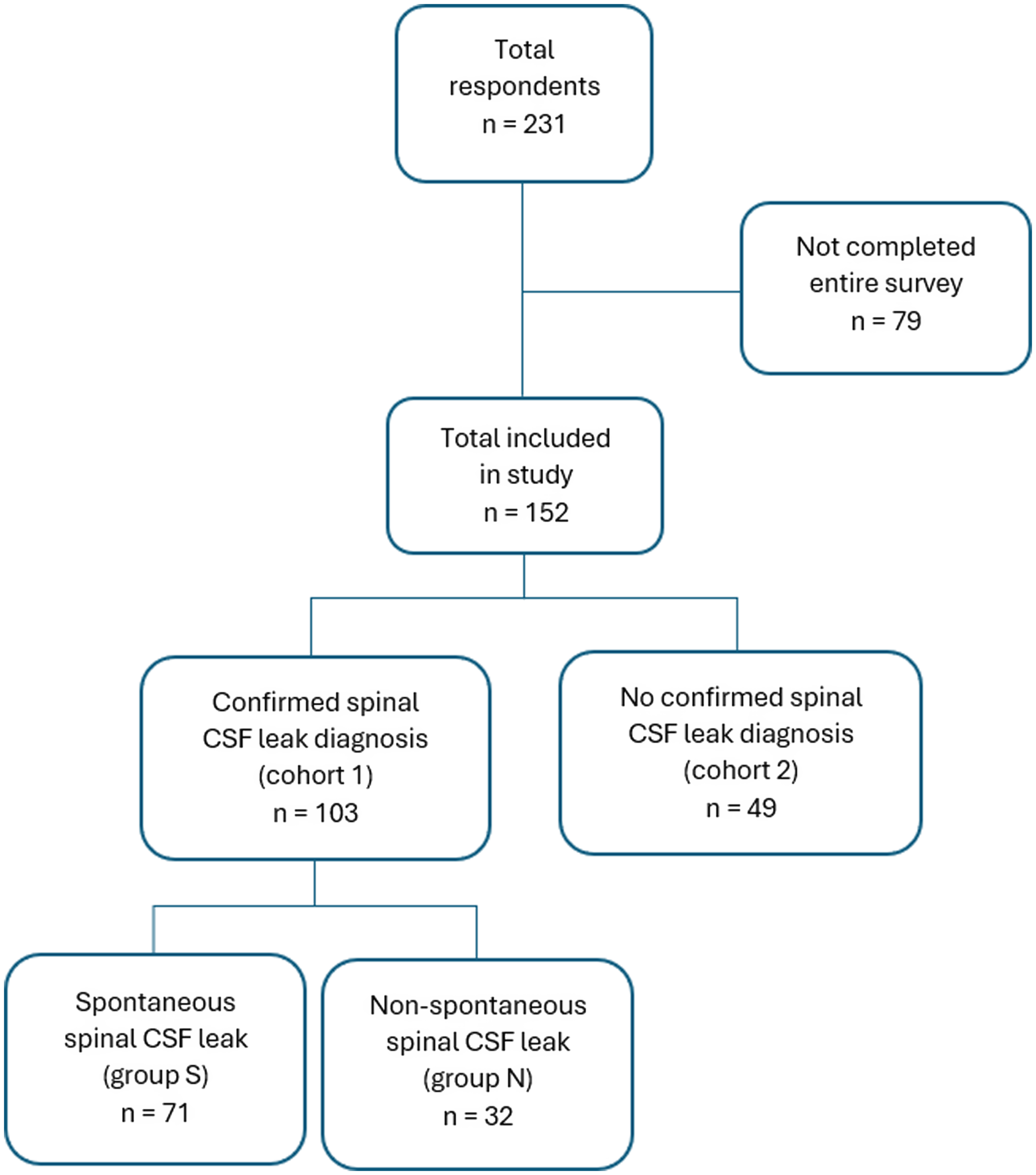
Figure 1. Flow diagram.
Cohort 1: Confirmed Spinal CSF Leak Diagnosis Patient Cohort
Participants
In this cohort, 79.61% percent were female with a median age between 40 and 49. Participants were highly educated as 73.78% had completed a bachelor’s degree or higher (Table 1).
Table 1. Patient demographics of confirmed spinal CSF leak patient cohort (cohort 1)

Diagnosis
The mean age of the participants at the time of diagnosis was 41.68 (SD: 10.37) years. The median duration of spinal CSF leak symptoms was 2–4 years. The majority of patients (88.3%) had seen at least four different healthcare providers since the start of their symptoms. Most respondents had seen a neurologist (94.2%), followed by a family physician (89.32%), emergency physician (85.44 %), anesthesiologist/pain physician (77.67%) and neurosurgeon (61.17%). Only half of the cohort had seen a “CSF leak specialist” (53.40%), defined as a specialist with expertise in this area. The median wait time to see a CSF leak specialist was between 6 and 12 months. Over 30% of participants indicated to have visited the emergency room (ER) more than five times since the start of illness (median number of ER visits 2–4). Data suggest that most respondents had been given their spinal CSF leak diagnosis by a neurologist (41.75%), followed by a neurosurgeon (10.68%), ER physician (8.74%), anesthesiologist/pain physician (7.77%), (neuro)radiologist (7.77%) and primary care practitioner (6.80%). The median wait time from symptom onset to receiving a spinal CSF leak diagnosis was 6–12 months (Figure 2).
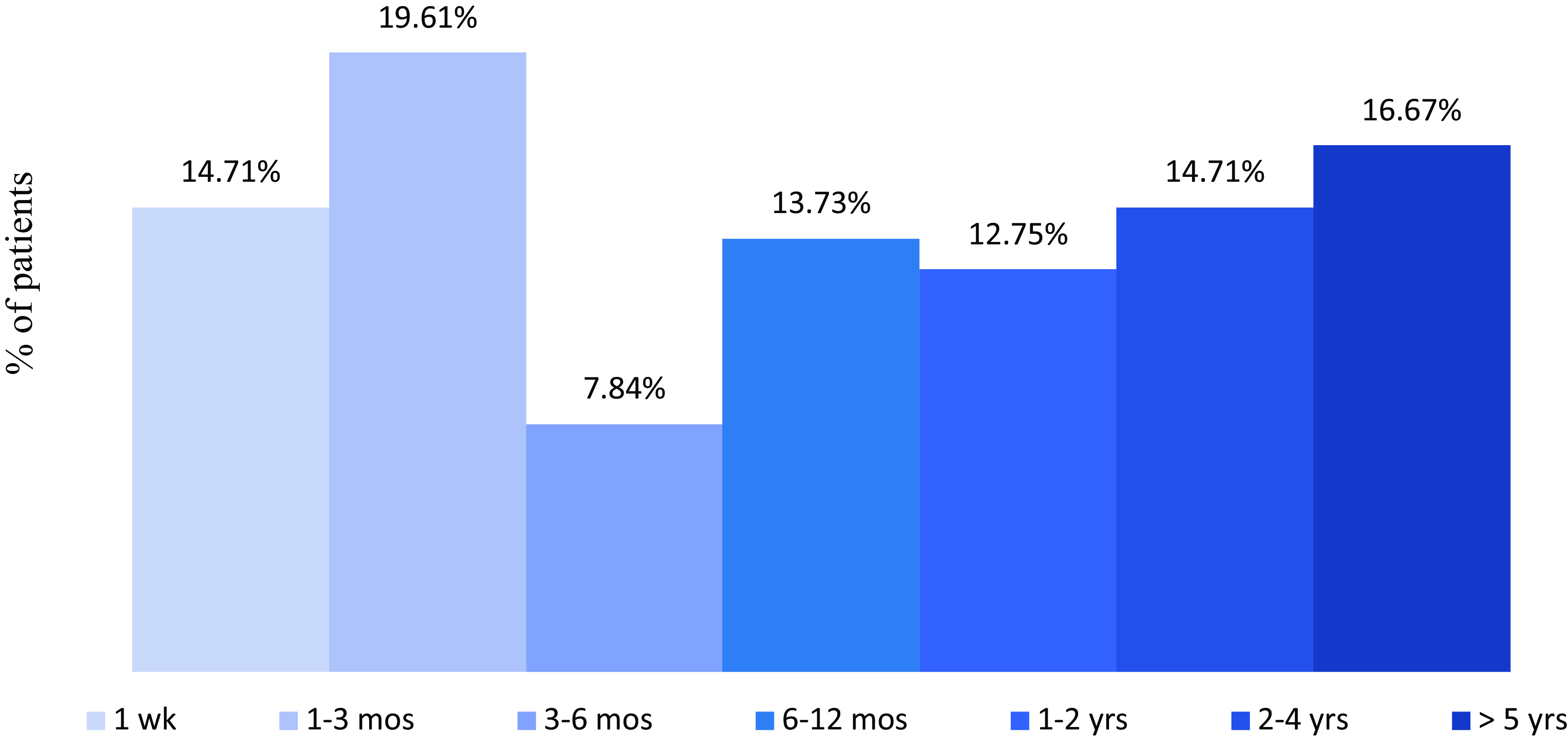
Figure 2. Median wait time from symptom onset to spinal CSF leak diagnosis in cohort 1 (n = 103).
Type of leak
Most respondents had been diagnosed with spontaneous spinal CSF leak or SIH (68.62%), with the remainder diagnosed with non-spontaneous (traumatic or iatrogenic) (31.38%) spinal CSF leaks. Of the respondents diagnosed with SIH, ventral dural tears were the most commonly reported type of leak (19.8%), followed by CSF-venous fistulas (12.87%), distal nerve root tears (1.98%) and proximal nerve root tears (0.99%). Most respondents (64.36%) however were unaware of the type of their leak. A small proportion of respondents suffered from a connective tissue disorder, such as Ehlers–Danlos syndrome (14.85%) and Marfan syndrome (2.97%).
Investigations
Respondents indicated that their diagnosis was made by means of an MRI of the brain with or without contrast (56.31%) and/or full spine MRI (49.51%) and/or CT/MR myelography (31.07%) and/or digital subtraction myelography (DSM) (25.24%). Only a small minority of respondents had needed radionuclide cisternography (8.74%). Of the cohort, 42.72% indicated not to have received any type of invasive imaging techniques (such as DSM) (Figure 3). The median wait times were as follows: for brain MRI, 30 days (IQR: 115, range: 0–730 days); for spinal MRI, 30 days (IQR: 115, range: 0–730 days); for CT/MR myelography, 91 days (IQR: 237, range: 2–730 days); for DSM, 114 days (IQR: 564, range: 11–9125 days); for radionuclide cisternography, 61 days (IQR: 178, range: 0–365 days); and for diagnosis to be made based on clinical history, 183 days (IQR: 228, range: 0–1095 days).
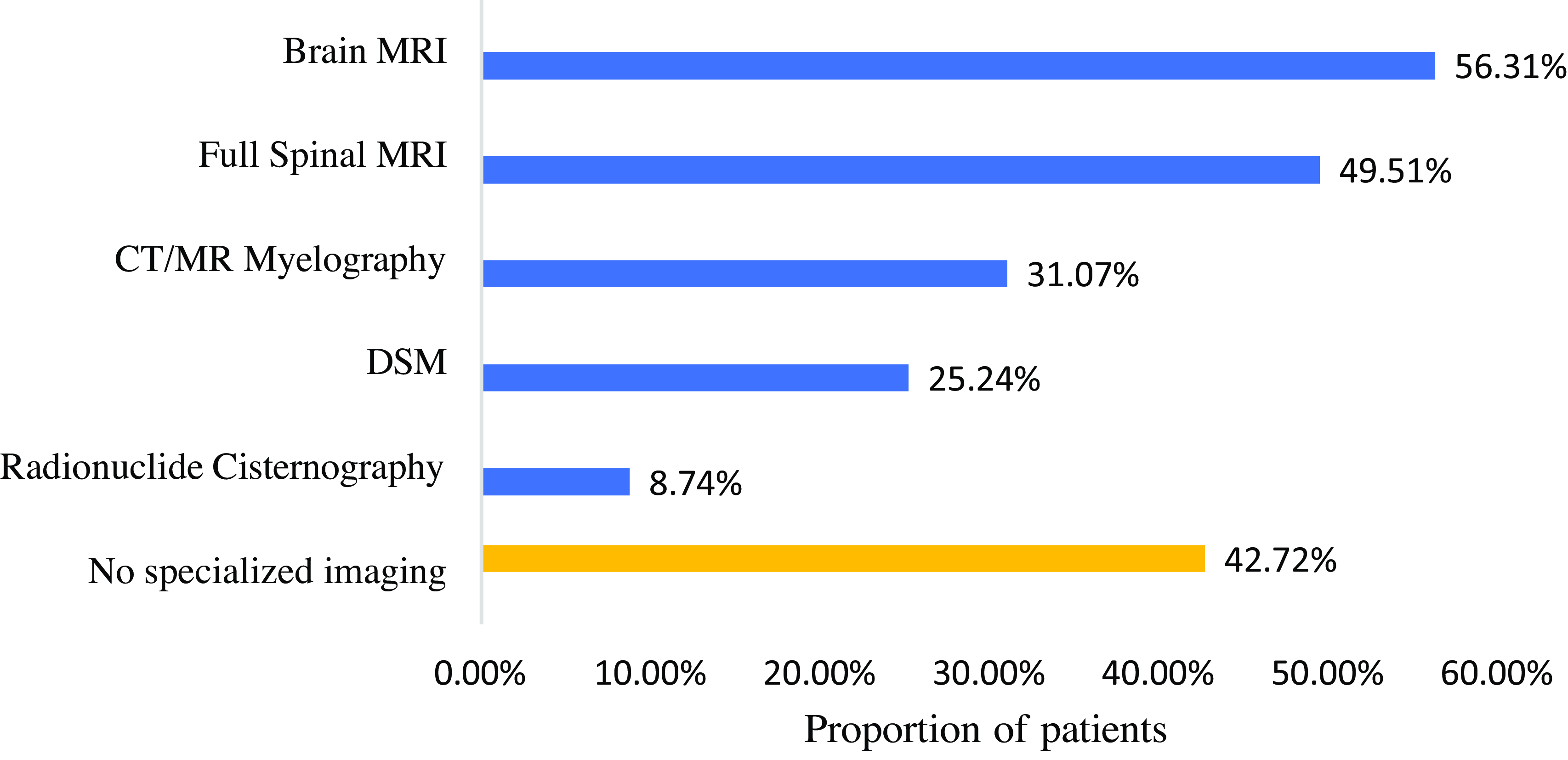
Figure 3. Frequency table of the different imaging techniques used to diagnose spinal CSF leak in cohort 1 (n = 103). DSM = digital subtraction myelography.
The centers where respondents received specialized imaging in Canada were Toronto (n = 25), Calgary (n = 7), Vancouver (n = 4) and Saskatchewan (n = 3). Approximately one-fifth of the specialized imaging was performed in the USA: Cedars Sinai (n = 10), Duke University (n = 7), Mayo Clinic (n = 3) and Stanford (n = 1). One patient received imaging in Germany.
Treatment and follow-up
Conservative treatment had only been effective in nine respondents (8.74%). Eighty-seven out of 103 respondents had received interventional treatment at the time of the survey. The median wait time between obtaining a diagnosis and the start of interventional treatment ranged from 1 to 3 months. Interventional treatment listed by respondents included EBP (n = 77), fibrin glue patch (n = 16), endovascular embolization, and surgery.
Of the 87 respondents receiving these interventional treatments, 43.68% (38 of 87) had sustained resolution of symptoms, 34.48% (30 of 87) had temporary resolution of symptoms and 21.84% (19 of 87) had no change of symptoms. Subsequently, 56.32% (49 of 87) of the respondents who had received interventional treatment were still suffering from their ongoing spinal CSF leak symptoms at the time of the survey. Of those who were successfully treated, the median time between symptom onset and successful treatment was between 6 and 12 months.
Sixty-eight respondents indicated to have had temporary or sustained relief of symptoms with interventional treatment. Of those, 27 respondents reported to have felt temporary (26%) or sustained (63%) effect from blood patching. Seventy-seven respondents reported that they had received one (31%), two (20%) or three or more (49%) blood patches (Figure 4). Of the patients who had received one EBP, 44% had sustained resolution of symptoms, 30% had temporary resolution and 26% had no change. Of the respondents who had received two EBPs, 62% had sustained resolution, 23% had temporary resolution and 15% had no change. Of the respondents who had received three or more EBPs, 46% had sustained resolution, 41% had temporary resolution and 13% had no change of symptoms. The median number of blood patches received in this cohort was two. Interestingly, the respondents who only had temporary relief from blood patching indicated to also have failed other subsequent interventional treatments.
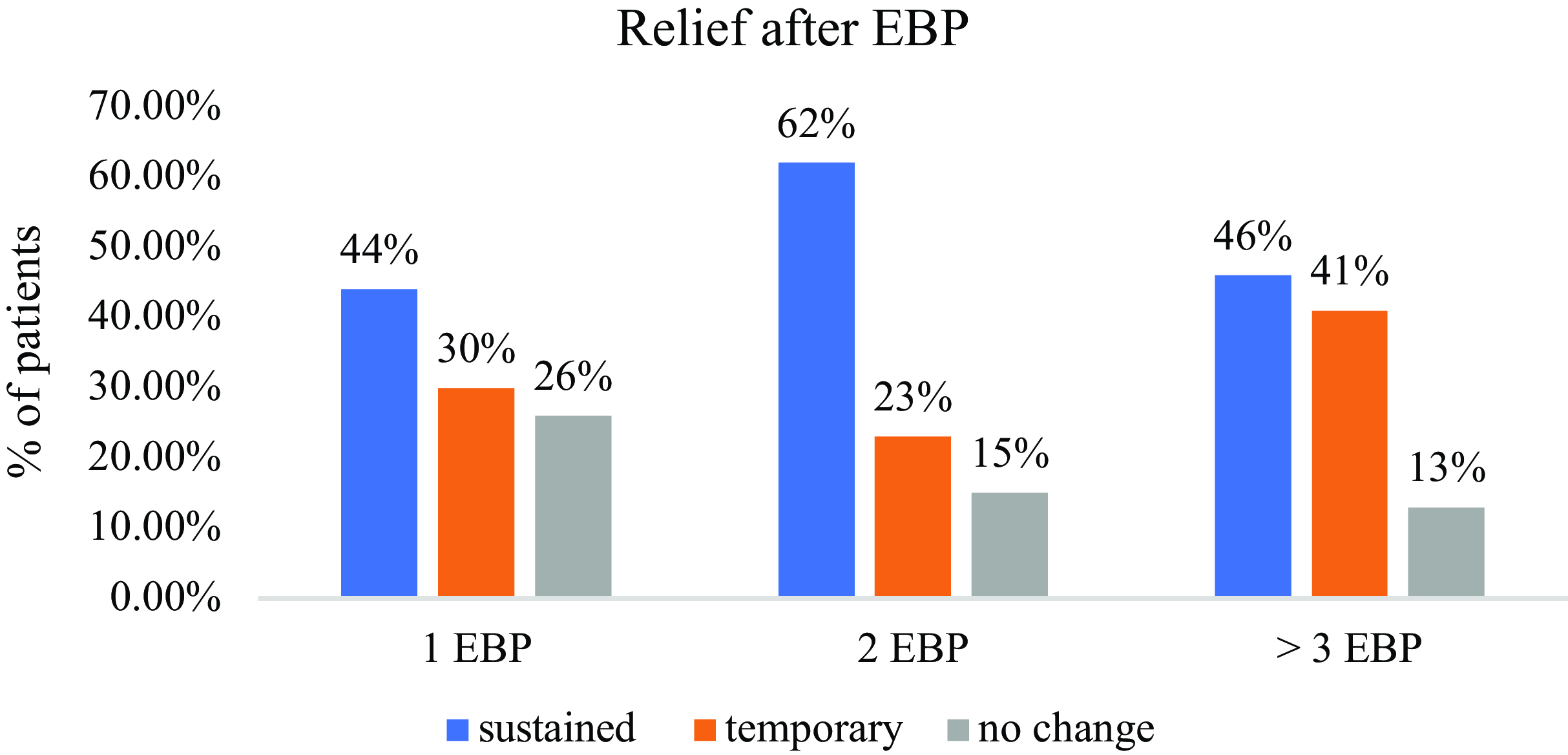
Figure 4. Outcomes after epidural blood patch (EBP) in cohort 1 (n = 103).
Some respondents (n = 8) previously failing up to three blood patches indicated to have received sustained relief from fibrin glue patching. Sixteen respondents reported that they had received one (50%), two (31%) or three or more (19%) fibrin glue patches. Of the respondents who had received one fibrin glue patch, 63% had sustained resolution of symptoms, 12% had temporary resolution, and 25% had no change. Of the respondents who had received two fibrin glue patches, 40% had sustained resolution of symptoms, another 40% had temporary resolution of symptoms, and 20% had no change of symptoms. Of the respondents who had received three or more fibrin glue patches, 67% had sustained resolution of symptoms, and 33% had temporary resolution of symptoms. The median number of fibrin glue patches received in this cohort was one.
Endovascular embolization had given permanent relief of symptoms in 3 respondents. Eighteen respondents indicated to have had surgical treatment for their CSF leak, with 61% indicating to have permanent relief. Unfortunately, data on partial or temporary relief of symptoms following embolization or surgery were not collected.
Comparing spinal CSF leak types, significantly more patients in the spontaneous CSF leak group had sustained relief after interventional treatments, compared with the non-spontaneous leaks (53.33% vs. 22.22%; p = 0.005).
Out-of-country care
Out-of-country referral for diagnosis and/or treatment is common in this patient population. Eighty-six out of 103 respondents were investigated in Canada, of whom 56 respondents received treatment in Canada only, eight patients received treatment both in Canada and the USA, four respondents received treatment exclusively in the USA, and eighteen respondents had not received treatment at the time of the survey. Fifteen Canadian respondents were sent directly to the USA for investigations, of which six received treatment in both countries, eight exclusively in the USA and one did not receive treatment yet. One patient underwent both investigations and treatment in Canada and the USA, and one respondent had all investigations and treatments done in Germany.
Relapse of spinal CSF leak symptoms
Of the cohort of 103 respondents, 42.7% indicated that they experienced a relapse of spinal CSF leak symptoms after initial successful treatment. The median time between successful treatment and relapse of symptoms was several weeks (range: several days to >6 months). Of the nine respondents who indicated that conservative treatment initially had resolved their CSF leak symptoms, 71.43% relapsed. Of the 27 respondents who reported that a blood patch resolved their spinal CSF leak symptoms, 60% relapsed. None of the respondents who had their leak sealed by fibrin glue patch relapsed. Of the respondents who had their leak managed by a mixed blood and fibrin patch, 75% relapsed. Following endovascular embolization, 33.33% of the respondents had a relapse. Following surgical repair, 35.71% of respondents relapsed.
Rebound intracranial hypertension (RIH) and aftercare
Approximately half of the individuals surveyed (52.5%) suffered from mild to moderate RIH after interventional treatment. Most respondents (77%) sought treatment for this condition but indicated that it was challenging to find appropriate follow-up. In terms of aftercare, a minority (17%) were offered physiotherapy or rehabilitation as part of their recovery from their CSF leak, of which 50% found this helpful. Even fewer respondents (9%) were offered mental health services, of which 55% found it helpful. Only 57% of respondents indicated to have had long-term follow-up for their CSF leak. Neurologists (38.83%) and primary care providers (25.24%) were listed as the primary physicians offering long-term follow-up.
Financial health and quality of life (QoL)
A vast majority of respondents (81.55%) stated that their financial well-being had been affected by their condition, with 89.32% reporting to have modified work duties and 37.86% reporting loss of (original) job due to their disease (Figure 5). At the time of the survey, 47 respondents (46%) were employed, 43 respondents (41.75%) were on short- or long-term disability leave and 13 participants (12.62%) were unemployed. Almost 61% of the respondents who had traveled out of country for diagnosis and/or treatment had self-funded their travel. The mean approximate cost for their out-of-country care was CAD $68,264.94 (SD: $87,304.64, range: CAD $0–400,000).
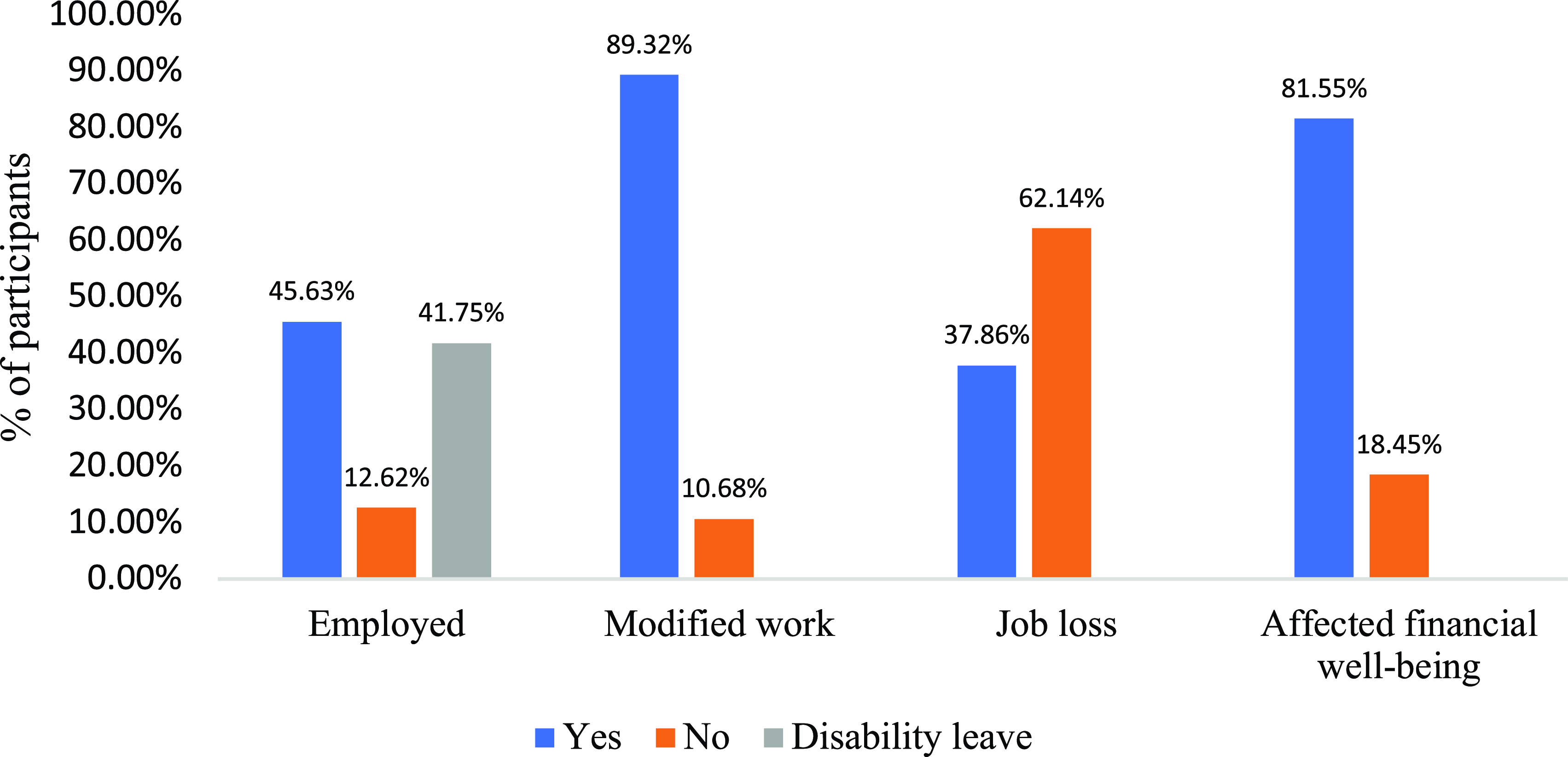
Figure 5. Financial impact of spinal CSF leak on Canadian patients (cohort 1, n = 103).
Respondents’ feedback
At the end of the survey, respondents were asked to explain how they believe care can be improved. Most respondents felt that more awareness and better education across all healthcare providers were needed, especially for frontline healthcare providers, such as general practitioners and emergency physicians. Respondents had difficulties in accessing the appropriate care, especially in accessing specialty care. Respondents felt that their condition had been ignored. More knowledge about rebound hypertension and better follow-up were also needed. Mental health and physiotherapy services were deemed meaningful and necessary. Furthermore, patients proposed that Canadian standardized diagnostic and treatment guidelines would be of great help.
Cohort 2: Non-confirmed Spinal CSF Leak Diagnosis Patient Cohort
This cohort consisted of 49 respondents, suffering from orthostatic headache without a confirmed spinal CSF leak diagnosis. Twenty-one respondents (43.75%) had been suffering for over 5 years; the median duration was between 2 and 4 years. The majority of these respondents (85.71%) had seen four or more different healthcare providers, including family physicians (93.88%), emergency physicians (77.5%), neurologists (75.5%), anesthesiologists (36.7%), neurosurgeons (20.4%) and CSF leak specialists (16.4%). However, the non-confirmed CSF leak respondents had visited a significantly lower number of physicians than the confirmed patients (p < 0.0001). There was also a difference in the type of physicians that were consulted as a much lower proportion of respondents had seen a CSF leak specialist, neurosurgeon and/or anesthesiologist. The median number of ER visits was between two and four times. The median wait time to see a CSF leak specialist was between 12 and 18 months. Most patients (81.63%) had brain MRI, and it did not show any signs of intracranial hypotension in 92.31%. Half of the patients (55.1%) did not have a spine MRI because it was not proposed. In 80.95% of patients who did have a spine MRI, no signs of a leak were found. A DSM or myelography was not advised in 77.55%. However, in those who did receive a DSM, no evidence of spinal CSF leak was found.
Discussion
To our knowledge, this is the largest survey of patients with spinal CSF leak and the first national survey in Canada. Of the findings, some are notable, and others are disturbing.
First, the majority of the cohort of confirmed spinal CSF leak respondents were highly educated females (bachelor’s degree or higher: 79%) and in their most productive years of life (mean age of diagnosis 42 years old). This is likely a reflection of individuals more likely to complete the survey (i.e., females and those with higher education), rather than a true reflection of the total patient population. As a consequence of this condition, 38% had lost their job, 89% needed modified work duties and 42% of those working were on short or long-term disability. Eighty-two percent of the respondents felt their financial well-being had been affected.
Second, the survey exposed the lack of access to care for this disease. The ideal model of care is a multidisciplinary center with involvement of a neurologist, neuroradiologist, specialized anesthesiologist and neurosurgeon, all who are knowledgeable of this condition and who collaborate together in providing this multifaceted complex patient care. Reference Cheema, Anderson and Angus-Leppan12,Reference Callen, Timpone and Schwertner16 Unfortunately, there are only a few centers in Canada with a coordinated care of these disciplines. Eighty-eight percent of the surveyed participants had seen at least four different healthcare providers from the onset of symptoms to diagnosis. Because of desperation, over 30% of respondents had visited the ER more than five times. The median wait time from the onset of symptoms to diagnosis ranged from 6 to 12 months, and the median wait time for the first blood patch was another 3 months. A systematic review on waitlists in the context of chronic pain showed that respondents experience a significant deterioration in health-related QoL and psychological well-being while waiting more than 6 months for treatment of chronic pain. Reference Lynch, Campbell and Clark17 Lack of access to care in this highly productive cohort of society not only immensely impacts QoL and physical and mental health, but also poses an important financial impact to the individual and society. The impact of this condition on patients’ mental health is significant. A recent paper reported that quality-of-life scores in this population are lower than those for patients with multiple sclerosis. Spiritual well-being scores are worse than those reported among patients with cancer. Reference Liaw, McCreary and Friedman7 Not surprisingly, many of the respondents indicated a need for mental health services.
Third, the lack of access results in out-of-country care that is very expensive, difficult on Canadian patients and physicians, and potentially avoidable. Out-of-country travel for diagnosis with or without treatment in this cohort is common. Specialized imaging, such as DSM, is only offered in Canada in a handful of specialized centers. From the survey, 29 out of 103 (28%) received imaging and/or treatment outside Canada. Although the affected individuals could possibly have applied for provincial out-of-country travel financial support, our survey showed that 61% who had traveled out of country for diagnosis and/or treatment funded themselves. This may be because applications for out-of-country assistance are challenging and can take months to approve. In our survey, the mean expense was CAD 68,264.94 (SD: 87,304.64, range: CAD 0–400,000). From the authors’ experience, the combined cost of imaging and surgical treatment for CSF leak treatment is much greater than this mean expense, either out of patients’ pockets or from the provincial health ministry.
Fourth, for those individuals who had finally received investigation and treatment, there was a lack of ongoing care. Approximately half (52.5%) of these respondents developed RIH after interventional treatment. One-third of those surveyed participants did not get sustained benefit from the EBP. Not surprisingly, this further exposes the patient to a significant challenge, as referral and access to specialized centers that can help with follow-up and further management are limited. This frustration resulted in many individuals paying out of pocket to seek treatment out of country or continue to suffer in silence. Furthermore, the respondents opined that they needed physical rehabilitation and mental health services as part of their recovery, but only 17% and 9%, respectively, received such support. In Canada, currently, the journey to care for spinal CSF leak sufferers is disjointed and suboptimal.
Lastly, there is significant room to increase awareness and education for clinicians. The advance in the overall management of this condition starts with frontline healthcare providers. At present, 88% of sufferers have seen ≥ 4 different healthcare providers from the onset of symptoms to the diagnosis of their condition. A substantial group of patients needed multiple treatments, demonstrating the severity of the disease and/or lack of access to an established and experienced multidisciplinary center. Reference Dobrocky, Nicholson and Häni18–Reference Callen, Friedman and Parikh19 Therefore, most participants strongly felt that heightened awareness and better education for clinicians are important, not just in the initial part of their management pathway with diagnosis and referral but also in the aftercare following their treatment. A few years ago, with the concerted efforts from patients and clinicians, a nonprofit charitable organization, Spinal CSF Leak Canada, was established. 20 The goal of this charity is to assist in advancing the understanding of spinal CSF leak among the general public and healthcare professionals across Canada; improve the availability and access of care for patients; assist in advancing medical research and education of this condition and its complications; advocate, provide a voice, and support to spinal CSF leak sufferers and their families; and drive positive policy changes forward.
The results of our survey are aligned with previous observations from the UK. Reference Cheema, Joy, Pople, Snape-Burns, Trevarthen and Matharu14 In this survey, data from 64 respondents with confirmed SIH diagnosis were analyzed. Similarly, this study population was primarily female (94%) with a mean age of 42.8 years at the time of diagnosis. Respondents indicated having difficulties obtaining a diagnosis and accessing appropriate treatment. Over 60% had ongoing symptoms at the time of survey, indicating this condition had significantly affected their overall well-being and financial health.
Our survey study has several limitations. The retrospective aspect of data collection can be subject to recall bias. Respondents might have had difficulty recalling some things and may have provided inaccurate information about past events. The cross-sectional aspect of this study may also be subject to selection bias, as certain respondents may have been more likely to have participated, such as females and those with higher education. This may have skewed some of the results in this survey, such as treatment outcomes. Second, the virtual aspect of this survey probably preferentially targeted the younger patient population and those with access to computers and smartphones, leading to further selection bias . Despite our best efforts in distributing the survey across Canada, we might have not been able to reach all Canadian patients with spinal CSF leak. Further, it is well-demonstrated that these patients are highly disabled from this condition. Their eagerness to help make a change for this population might have created a conformity bias in which responses are exaggerated or attenuated. Conformity bias might even have been further enlarged by some participants with negative experiences and/or lack of resolution of symptoms and/or actively engaged in patient groups.
Our study also has strengths, including sampling a high number of individuals and bringing forward data and information that reflects the current state of spinal CSF leak care in Canada. This is the first step required to determine the needs of this patient population and work toward solutions over time.
Although the understanding of spinal CSF leak has increased over recent years, there continues to be a significant lack of awareness and education surrounding the understanding and unified treatment approach of this condition. Further research should focus on multicenter prospective data collection in this patient population, the development of national Canadian spinal CSF leak clinical guidelines or practice recommendations and the establishment of a clinical care pathway for patients with spinal CSF leak.
Conclusion
Our survey has demonstrated significant gaps in spinal CSF leak care in Canada, similar to global observations. A lack of awareness, delayed care and inconsistencies in investigations and management are common. Access to aftercare is challenging, elevating the risk of relapse and complications. Spinal CSF leak leads to highly disabling symptoms and may cause a significant impact on patients’ physical, mental and financial well-being. Improved awareness, better referral pathways and access to care, standardized diagnostic and treatment algorithms and high-quality research are key factors in optimizing spinal CSF leak care in Canada.
Acknowledgments
We would like to thank Spinal CSF Leak Canada for their assistance with the design and posting of this survey, as well as our research assistant, Mrs Aparna Saripella. We would like to thank Mr Xingshan Cao (biostatistician) for his help with data analysis.
Author contributions
Conception and design of survey: YH, PP and FA. Analysis of data, interpretation of results and drafting of manuscript: YH and CV. Revision and approval of final manuscript: all authors.
Funding statement
None.
Competing interests
*Dr Y. Hoydonckx: She received technical support from Spinal CSF Leak Canada to design and post the survey online and received a research grant from Spinal CSF Leak Canada supporting another research study. Dr Hoydonckx is the Scientific Committee Vice Chair of Spinal CSF Leak Canada.
*Ms C. Veydt: No COI.
*Dr F. Amoozegar: She received research grants from Spinal CSF Leak Canada, Abbvie, Eli Lilly, Pfizer and Lundbeck. She received consulting fees from Abbvie, Lundbeck and Pfizer. She has received honoraria for lectures from Abbvie, Eli Lilly, Lundbeck, Pfizer, Aralez and Novartis and received travel support from Abbvie and Pfizer. She has participated in the Advisory Board of Abbvie, Lundbeck and Pfizer. Dr Amoozegar is the Scientific Committee Chair of Spinal CSF Leak Canada.
* Dr Peng, Dr Hoydonckx and Dr Amoozegar are members of the Spinal CSF Leak Canada Medical Advisory Board.








